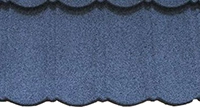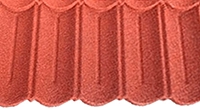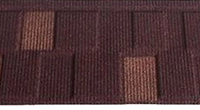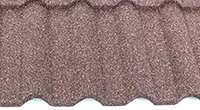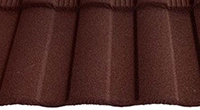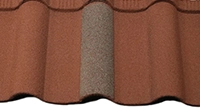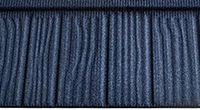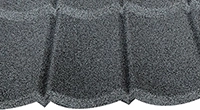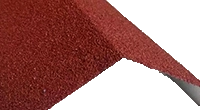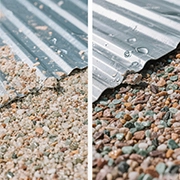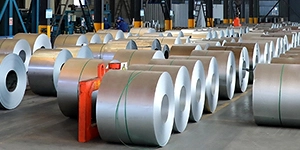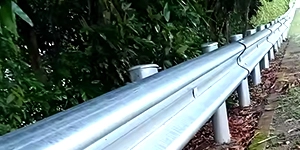How Can You Distinguish Premium Stone-Coated Metal Tiles from Inferior Ones?
With stone-coated metal tiles gaining popularity worldwide, manufacturers of varying quality levels have entered the market. This reality leads to a crucial question: how can you distinguish premium stone-coated metal tiles from inferior ones? Understanding the key differentiators empowers specifiers, contractors, and homeowners to make informed decisions that ensure long-term performance and value.
Critical Examination of Surface Coating Quality
The surface coating represents one of the most visible indicators of overall quality. Premium tiles feature uniform, vibrant coloration with consistent coverage across the entire surface . The stone granules should be evenly distributed without bare spots or excessive accumulation in certain areas. When you run your hand across the surface, it should feel consistently textured but smooth, without sharp protruding edges or noticeable depressions.
Inferior products often display inconsistent coating application with visible streaks, color variations, or uneven texture . These inconsistencies not only compromise aesthetics but may indicate inadequate UV protection and reduced service life. A simple thumbnail test can reveal coating adhesion quality—gently scratch the surface with your fingernail; if significant color transfers or granules dislodge easily, the coating likely lacks sufficient durability .
Evaluating Material Thickness and Weight
While stone-coated metal tiles are inherently lightweight compared to traditional alternatives, substantial differences exist within the product category. Premium tiles typically feature a steel substrate thickness of 0.4mm or greater , providing sufficient structural integrity to resist deformation under impact or heavy loads. This thickness should remain consistent across the entire tile, with no noticeable thinning at formed features or edges.
Inferior products often reduce material thickness to cut costs, resulting in tiles that feel noticeably lightweight and insubstantial when handled . This reduction compromises wind resistance, impact performance, and overall durability. When evaluating products, ask suppliers for specific data on substrate thickness and weight per square meter, then verify this information by physically examining samples with calipers and scales.
Assessing Edge Treatment and Manufacturing Precision
The quality of edge treatment and overall manufacturing precision offers telling insights into product quality. Premium tiles exhibit clean, straight cuts with smooth edges free of burrs or sharp protrusions . The formed features should be crisp and consistent from tile to tile, ensuring proper interlock and uniform appearance when installed.
Inferior products often display ragged edges, uneven cuts, and visible manufacturing defects . These imperfections not only compromise aesthetics but may affect weathertightness and installation quality. Examine multiple tiles from the same production batch to verify consistency—significant variations indicate poor manufacturing process control that should raise concerns about long-term reliability.
Analyzing Base Material Composition
The metallic substrate forms the structural backbone of the entire system, making its composition a critical quality determinant. Premium tiles utilize galvanized aluminum-zinc steel plate with a standard composition of 55% aluminum, 43.4% zinc, and 1.6% silicon . This specific formulation provides exceptional corrosion resistance—up to six times greater than conventional galvanized steel .
Inferior products may use lower-grade galvanized steel or substandard aluminum-zinc coatings with inadequate corrosion protection. Ask suppliers for material certification documents verifying the coating composition and weight (typically g/m²). The "zinc flower" pattern on the substrate's reverse side should appear uniform and closely spaced—large, irregular patterns often indicate inferior coating quality .
Verifying Stone Granule Quality
The protective stone layer represents another crucial quality differentiator. Premium tiles use natural basalt granules processed through high-temperature ceramic firing to ensure permanent colorfastness . These high-quality stones resist UV degradation and maintain their appearance through decades of weather exposure.
Lower-quality alternatives may use synthetic aggregates or naturally colored stones without ceramic processing, resulting in inferior UV resistance and potential color fading. Some manufacturers may apply colored paint over conventional aggregates—a approach that typically shows rapid fading. Ask suppliers about their coloring process and request samples for accelerated weathering testing if possible.
Performance Testing and Certification
Reputable manufacturers subject their products to independent testing and certification through recognized laboratories. Look for products with documented test results for:
- Wind resistance (typically certified for winds exceeding 120 mph/190 km/h)
- Fire resistance (Class A rating)
- Freeze-thaw cycling resistance
- Impact resistance (tested against hail simulation)
- Colorfastness under accelerated UV exposure
Additionally, manufacturers with ISO 9001 quality management and ISO 14001 environmental management certifications typically demonstrate greater consistency and reliability . Products with international certifications from UL, CE, or other recognized bodies provide additional assurance of performance claims.
Practical Performance Verification Tests
Beyond documentation, simple practical tests can reveal significant quality differences:
- Saltwater immersion test: Submerge tile samples in saltwater solution and observe for rust formation at edges or cut lines over several weeks . Premium tiles show no corrosion, while inferior products typically show rust within days or weeks.
- Freeze-thaw test: Place samples in freezer environments, then subject to impact testing while cold . Quality tiles maintain their structural integrity, while inferior products may become brittle and crack.
- Adhesion test: Apply and remove strong tape from the stone surface repeatedly. Significant granule loss indicates inadequate adhesive strength.
Completeness of Accessory System
A premium tile product includes a comprehensive system of compatible accessories—ridge caps, valley flashings, eave starters, gable trims, and penetration flashings . The quality of these accessories should match that of the field tiles, with identical coating systems and equivalent durability. Incomplete or mismatched accessory systems often indicate cost-cutting that compromises overall roof performance.
Manufacturer Reputation and Technical Support
Finally, consider the manufacturer's industry standing and support capabilities. Established manufacturers with extended track records and numerous reference projects typically offer greater reliability . Technical support services—including installation training, detail drawing preparation, and jobsite consultation—further differentiate premium suppliers from basic product vendors.
By applying these comprehensive evaluation criteria, specifiers can confidently distinguish genuinely premium stone-coated metal tiles from inferior alternatives, ensuring selection of products that will deliver decades of reliable, maintenance-free performance. The initial selection effort pays substantial dividends through avoided problems, extended service life, and consistent aesthetic appeal.
